Current application of machine learning models in the analysis of remote sensing survey data for geological hazards
-
摘要:
为研究机器学习模型在地质灾害遥感调查中的应用现状,基于中国知网(CNKI)数据库,采用文献计量法进行可视化分析,从发文量、研究热点、研究机构等多视角详述机器学习模型、地质灾害遥感调查技术的研究进展。利用VOSviewer软件分析机器学习模型与地质灾害遥感调查技术高频关键词及其关联度,并通过分类统计定量化分析得出研究热点、关联性和发展趋势。结果表明:中国地质灾害遥感调查技术正由“图谱测量”向“图谱与几何测量”逐步转变,新一代机器学习算法伴随着无人机遥感技术的进步,已成为本领域最热门的研究方向,推动着地质灾害体自动识别和智能提取技术发展;未来的地质灾害遥感调查技术必然是围绕“空−天−地”协同应用与应急监测的综合技术体系。研究认为,针对不同遥感影像数据的特点,综合研究不同机器学习模型在各种遥感解译工作场景中的应用是未来的主要发展趋势。
Abstract:To investigate the current landscape of the application of machine learning in remote sensing surveys of geological disasters and to support the development of intelligent remote sensing survey technologies for geological disasters, a bibliometric analysis of machine learning and geological disaster remote sensing survey technology was conducted using the China National Knowledge Infrastructure (CNKI) database. Visual analysis was performed from multiple perspectives, including the number of publications, research hotspots, and research institutions, to describe the research progress of machine learning and geological disaster remote sensing survey technology. VOSviewer software was utilized to scrutinize the high-frequency keywords and their associations between machine learning and geological disaster remote sensing survey technology. The results showed that remote sensing survey technology for geological disasters in China is gradually shifting from traditional “topographic measurement” towards more holistic “topographic and geometric measuremen” approaches. With the advancement of unmanned aerial vehicle remote sensing technology, the new generation of intelligent learning algorithms have emerged as the predominant research direction, fostering the growth of automated geological disaster recognition and intelligent extraction techniques. Nevertheless, the future of remote sensing survey technology for geological disasters is poised to evolve into a comprehensive technical system that emphasizes the synergistic “air-space-ground” application and emergency monitoring. Considering the diverse characteristics of remote sensing image data, the primary developmental trajectory will involve an extensive exploration of various machine learning algorithms across different remote sensing interpretation scenarios.
-
Keywords:
- geologic hazard /
- remote sensing /
- machine learning /
- bibliometrics
-
0. 引言
泥岩作为常见的沉积岩之一,在我国广泛分布[1]。由于泥岩特殊的结构组成与物理性质,其在吸湿[2]、吸水[3]、浸水[4]等不同水环境作用过程中,极易发生膨胀软化与崩解风化,继而成为诱发各类如滑坡[5 − 7]、崩塌[8 − 9]、泥石流[10]等地质灾害产生的关键因素。
浸水作用作为较为广泛且直接的一种水-岩作用形式,通常发生于强降雨、库水位调节等行为后的岩石地层中[11],是导致泥岩膨胀的主要原因[4, 12],而泥岩膨胀又极大地支配了其物理结构和力学性能的演变[13 − 14]。因此,聚焦于浸水作用下泥岩膨胀致使的力学损伤,是众多学者的研究目标。叶朝良等[15]开展了一系列浸水作用下泥岩的力学测试,得出泥岩膨胀性能与其干密度有关,浸水膨胀软化将显著降低泥岩的抗剪强度。Liu等[16]对泥岩进行了浸水膨胀与不同含水量下的单轴、三轴压缩等试验,揭示了泥岩吸水膨胀对其力学性质的损伤规律。丁秀丽等[3]将水化膨胀作用引入泥岩的统计损伤模型中,表征了膨胀对于泥岩各力学强度参数的损伤影响。
浸水作用下泥岩膨胀所造成的力学损伤,源于其强烈且复杂的结构劣化效应[17 − 18],因而与泥岩膨胀同步发生的结构劣化,也引发了学者们的广泛关注。Jiang等[19]采用CT扫描技术观测了浸水作用诱导泥岩裂缝产生的演变过程,指出泥岩的水致劣化是由于其不均匀膨胀应力所引起的内部裂隙累积。孙怡等[20]研究发现红层泥质岩在浸水-失水过程中将发生胀缩变形,其在浸水下的膨胀作用受制于内部裂隙的扩展情况。Geng等[21]认为泥岩吸水膨胀后会产生强烈拉应力而引起局部变形并产生裂隙网络,致使岩石结构由致密变为疏松。
为进一步揭示浸水作用下泥岩膨胀时结构劣化的内在诱因,已有研究从其原生结构[12]、矿物组成[22]与水化环境[23]等方面开展了较为深入的微观机理研究。泥岩中黏土矿物主要包括蒙脱石、伊利石与高岭石等[24],其均为由硅片与铝片所构成的复合铝-硅酸盐晶体[25]。伊利石在形成过程中层间发生钾离子嵌入而结合紧密,被认为具微弱膨胀性或不具膨胀性[25 − 26];而蒙脱石层间联结力由较弱的范德华力提供,是具有强烈膨胀性的黏土矿物[27],其含量通常作为评判岩石膨胀性能与崩解程度的指标[17]。李长冬等[28]研究了水作用下岩石结构多尺度演变特征,指出蒙脱石的膨胀行为是黏土矿物团聚体溶胀压力的主要来源,为造成其结构破坏的重要因素。Zhang等[29]基于分析水作用下的胀缩试验现象与分子动力学模拟的结果,认为蒙脱石的膨胀效应是泥岩发生劣化的主要原因。此外,也有部分学者指出伊利石可使岩石发生50~60%的体积膨胀[30 − 31]。谢小帅等[32]、刘凤云等[33]在探讨泥岩等软岩的膨胀机理时,认为岩石内含有的伊利石发挥了主要的膨胀贡献。Wu等[34]在研究了泥岩不同尺度下的水致劣化与力学响应现象后,将其破坏机理主要归因于伊利石引起的膨胀作用。上述研究表明,蒙脱石与伊利石被认为是导致泥岩膨胀的关键因素,然而在不同研究背景下,两种矿物膨胀性差异对控制泥岩膨胀特性的具体作用尚未明确,从而也导致了在泥岩膨胀的微-宏观响应机制认识上存在不足。
基于此,本文采用盐离子作为“探针”,将其作为一种可避免短时间内对泥岩样本的化学结构产生额外干扰的敏感指标,集中研究微观机制控制下同一岩体泥岩对盐离子作用的差异性反馈,从而揭示浸水作用下泥岩的膨胀演化与界面响应过程。基于分子动力学模拟深入探究两种黏土矿物的水化膨胀特征,对泥岩膨胀的关键界面作用与膨胀微-宏观响应机制作出进一步解释。
1. 研究样本与方法
1.1 研究样本
三峡库区是我国地质灾害最为频发的地区之一,其广泛分布的泥岩地层也是引发关注最多的致灾地层之一[35]。本文所用样品采自三峡库区秭归盆地的侏罗系紫红色泥岩,将其加工成直径与高度为50 mm × 50 mm、50 mm × 25 mm的两种圆柱体尺寸以满足研究需要,部分样品如图1所示。泥岩样本外表光滑、不见层理,镜下矿物颗粒多微小难辨,含钙泥质杂基与原岩碎屑。
泥岩的基础物理指标的测定结果见表1所示,由于其遇水后发生强烈膨胀,孔隙率基于压汞试验所获取。
表 1 岩样基础物理指标Table 1. Basic physical indices of rock samples天然密度/(g·cm−3) 干密度/(g·cm−3) 天然含水量/% 孔隙率/% 2.611 2.546 2.581 3.604 利用Ragiku Smartlab X射线多晶衍射仪进行矿物成分分析,得到泥岩的矿物成分组成见图2所示。泥岩的矿物成分主要由黏土矿物及石英组成,两者的占比之和超过80%。
1.2 试验方法
本研究分别采用去离子与添加盐离子(1wt%、3wt%、5wt%与10wt%NaCl,选择不同浓度以增强盐离子的影响并避免单一浓度的局限性)的水溶液对50 mm × 25 mm的泥岩样品了进行膨胀性重复试验,以研究泥岩的膨胀特性。根据《工程岩体试验方法标准》(GB T
50266 -2013)中的规定,岩石侧限膨胀率为:(1) 式中:VHP——侧限膨胀率/%;
H——试件高度/mm;
ΔH1——侧向约束试件的轴向变形值/mm。
CT扫描是研究岩石内部结构的重要技术手段[36],为对泥岩膨胀过程中内部结构进行可视化分析,额外制备了10 mm × 10 mm的圆柱体试样以开展精度为10~11 μm的μCT扫描试验,试验仪器为通用电气公司的Phoenix v|tome|x s工业CT。将泥岩分别浸泡在去离子水与5wt%NaCl溶液中,以获取其内部结构随浸水时间的演变过程。
由于泥岩的膨胀主要为吸水所诱导,同步开展了一维毛细吸水试验以研究泥岩的吸水特性。试验所用泥岩尺寸为50 mm × 50 mm,其仅下端面进行吸水,上端面与周身均涂抹环氧树脂,以防止水分润湿与蒸发。在达到相应的吸水时间后,将岩样从水中取出,用湿毛巾将其底部表面的水分擦净后置于高精度电子天平上称得质量以计算其吸水率:
(2) 式中:w——某时刻的吸水率/%;
md——烘干后泥岩的质量/g;
mw——某时刻泥岩的总质量/g。
1.3 分子动力学模拟
本文利用分子动力学模拟研究伊利石与蒙脱石的关键影响。所用泥岩中主要含有伊利石与伊/蒙混层,伊/蒙混层是由伊利石晶层和蒙脱石晶层沿C轴或(001)方向组成的层状硅酸盐矿物[37],其膨胀性取决于伊利石和蒙脱石的组成比与电荷分布[38, 39],蒙脱石为其膨胀性的主要来源(伊/蒙混层内发生蒙脱石向伊利石转变后,整体的膨胀性明显降低)[40]。因此,伊/蒙混层的性质可通过伊利石与蒙脱石反映。采取适用于模拟溶液与水合物的SPC水分子模型,参考Skipper等人[41]蒙脱石模型:Na0.75(Si7.75Al0.25)(Al3.25Mg0.75)O20(OH)4·nH2O,单位晶胞晶格常数α = 90°,β = 99°,γ = 90°;晶格大小为a
为了提高模拟精度与模拟效率,蒙脱石与伊利石的水化膨胀模拟将分步展开,一个模拟步仅引入一定量的溶液分子,具体设定见表2。首先,将设定的溶液分子数引入层间并进行几何优化与能量最小化(图4所示);而后分别进行步长0.5 fs时长100 ps的NVT与NPT系综(温度298 K,压强105 Pa),使系统达到能量平衡与密度稳定;平衡后测定其基底间距变化以反映膨胀。重复上述操作直到层间内含有总溶液分子量后,进行步长0.1 fs时长
1000 ps的NVT与NPT系综以实现系统的充分弛豫。采取适用于黏土矿物的CLAYFF力场[43]进行模拟计算,力场参数如表3所示。模拟控温控压方式为Nosé-Hoover法,短程相互作用的截断距离为90wt%NaCl/分子个数 相对原子质量 5wt%NaCl/分子个数 相对原子质量 蒙脱石 单次 130H2O 2340.0 124H2O + 2NaCl 2349.0 共计 780H2O 14040.0 744H2O + 12NaCl 14094.0 伊利石 共计 65H2O 1170.0 62H2O + 1NaCl 1174.5 共计 390H2O 7020.0 372H2O + 6NaCl 7047.0 物质 原子/离子 间距σ/Å 能量ε/(kcal·mol−1) 电荷q/e 矿物
分子桥联O 3.553 2 0.155 4 −1.050 0 羟基O 3.553 2 0.155 4 −0.950 0 有八面体取代的桥联O 3.553 2 0.155 4 −1.180 8 有四面体取代的桥联O 3.553 2 0.155 4 −1.168 8 有取代的羟基O 3.553 2 0.155 4 −1.080 8 羟基H 0.000 0 0.000 0 0.425 0 四面体Si 3.706 4 1.840 5×10−6 2.100 0 四面体Al 3.706 4 1.840 5×10−6 1.575 0 八面体Al 4.794 3 1.329 8×10−6 1.575 0 八面体Mg 5.909 0 9.029 8×10−7 1.360 0 Na 2.637 8 0.130 1 1.000 0 K 3.742 3 0.100 0 1.000 0 水分子 O水 3.553 2 0.155 4 −0.820 0 H水 0.000 0 0.000 0 0.410 0 Lennard-Jones (L-J)势函数用于描述van der Waals相互作用能[44]:
(3) 式中:qi、qj——i和j的电荷;
rij——i和j之间的距离;
C——库伦相互作用常数;
σij——位势为零时(即平衡位置)i和j之间的有 限距离;
εij——势阱深度;
ε0——相对介电常数。
2. 泥岩的水化膨胀特征
2.1 侧限膨胀与裂隙演变
侧限膨胀试验中泥岩共经历72 h连续膨胀,且不同溶液中膨胀率随时间均呈现明显的阶段二分性(见图5),即前期的迅速膨胀与后期的缓慢膨胀。不同溶液中泥岩80%膨胀均发生在前30 min,此后膨胀曲线几乎水平,膨胀率增长十分缓慢。当盐离子浓度在0~3wt%变化时,其对泥岩的膨胀抑制作用十分显著,膨胀率从17.58%降至5.764%;而盐离子浓度3~10wt%时,泥岩对其敏感性大幅下降,膨胀率仅降低0.751%。
完成试验后取出自然风干的泥岩样品,可见泥岩经历膨胀后将发生明显结构破坏(图5),且随膨胀率降低该破坏程度逐渐减弱。表现为去离子水作用下泥岩严重崩解,完全丧失原有结构;盐离子浓度0~3wt%时,随浓度增长,泥岩膨胀率与结构裂隙数量、体积同步下降;此后,浓度增长并未引起泥岩膨胀率的显著降低,其结构裂隙演变也相对微弱。
上述试验现象表明,去离子水作用下泥岩将发生快速膨胀崩解,添加盐离子后泥岩膨胀性受到显著抑制,且该抑制作用在1~10wt%范围内不因浓度的变化而消失。此外,泥岩膨胀可能与其内部裂隙的产生与发展有着极为重要的关联,而盐离子可能通过减少其内部裂隙产生以抑制膨胀。
基于μCT扫描的结果进一步揭示了盐离子、膨胀与裂隙产生之间的关联性。如图6所示,在浸水作用过程中,泥岩内部产生了大量裂隙,总体表现为由单裂隙分布逐渐发展成复杂贯通裂隙网络的演变规律,且盐离子可极大地减少泥岩内裂隙的产生。通过盒计数法(Box-counting Method)计算了泥岩裂隙网络的计盒维数(Box Dimension),其为使用最广泛的分形维数之一,由Falconer提出[46]:
(4) 式中:DB——计盒维数;
δ——盒子边长;
F——计算的有界非空子集;
Nδ(F)——该集合与盒子网格的相交数。
DB值越大,表明泥岩内部的裂隙网络越复杂。具体参数如表4所示,可知在浸水前30 min,泥岩分形维数陡增,5wt%NaCl溶液与去离子水中泥岩裂隙体积分别呈现50到600倍左右的增长。该结果对应了泥岩在前30 min内发生的迅速膨胀,同时与盐离子在泥岩侧限膨胀试验中的抑制作用具有一致性。而浸水30~240 min内,由于未对泥岩进行侧向约束,两种溶液中泥岩裂隙总体积将随着时间的推移继续增长,但该增长主要表现为扩展已有裂隙的结果,新产生的裂隙较少,分形维数变化不大。
表 4 泥岩裂隙网络参数Table 4. Parameters of the mudstone crack network分形维数 裂隙体积总和/mm3 0% 5% 0% 5% 0 min 1.435 1.459 0.039 0.122 30 min 2.372 2.131 25.085 6.740 240 min 2.440 2.305 52.890 24.105 裂隙网络演化过程总体说明了浸水作用下泥岩所发生的结构劣化,表明泥岩宏观膨胀是内部裂隙导致其体积增大、发生竖向位移的表现形式。此结果一方面可能反映了泥岩中黏土矿物膨胀对其内在结构所具有的强烈破坏效应;另一方面,也可能表征了泥岩内部毛细吸力所引起的空气压裂(air-breakage)作用[22]。
2.2 毛细吸水与界面浸润
不同溶液中泥岩的毛细吸水曲线如图7所示,吸水过程共经历10天,吸水曲线表现出与膨胀相似的阶段性。前4 h内泥岩在三种溶液中的吸附趋势较为一致,毛细吸水率均随时间迅速增长,且4 h时三者达到的吸水率无明显差别。随后,5wt%与10wt%NaCl溶液中泥岩立即进入缓慢吸水阶段,而去离子水中泥岩的吸水曲线发展成三个阶段,5~40 h内仍以稳定的速率增长,并且泥岩外表同时产生肉眼可见的裂隙。直到40 h后,三种溶液中的泥岩都为一致的缓慢吸水,吸水曲线平直,最终去离子水、5wt%、10wt%NaCl溶液中毛细吸水率分别达到7.25%、4.29%、4.10%。
上述试验结果表明,相对于盐离子溶液,泥岩对去离子水具有更强的毛细吸力,且该吸力可能对泥岩的结构具有破坏作用。根据Young-Laplace方程可计算岩石内的毛细吸力[47]:
(5) 式中:Pc——毛细吸力;
γ——界面张力;
θ——界面接触角;
r——毛细管的半径。
若将岩石内的微孔、裂隙看作毛细管,泥岩毛细吸水本质是其原生微孔、裂隙界面(矿物分子与矿物分子之间形成的界面)发生浸润的过程,根据空气压裂理论与Young-Laplace方程[22],泥岩毛细吸水可压缩内部空气而形成扩容应力(空气压力),并在该过程中达到毛细吸力与扩容应力的动态平衡。由于毛细吸力与界面接触角呈负相关,因而盐离子可通过增大溶液浸润接触角的方式降低空气扩容应力,从而削弱浸水时泥岩的空气压裂作用。
2.3 界面水化与结晶膨胀
泥岩主要存在三种膨胀模式:机械膨胀、渗透膨胀和结晶膨胀。其中,黏土矿物主导了泥岩的结晶膨胀,而结晶膨胀是蒙脱石与伊利石层间界面水化的表现形式。因此,本文基于分子动力学模拟实现对蒙脱石与伊利石的结晶膨胀研究,并以两层分子结构的平均基底间距作为评判其结晶膨胀程度的指标。
模拟结果表明(图8),蒙脱石的基底间距小于15
蒙脱石与伊利石分子结晶膨胀的模拟表明,添加盐离子后蒙脱石与伊利石在膨胀过程中基底间距的扩展受到抑制,且其对于蒙脱石的抑制作用更加明显。此外,由于模拟引入的溶液分子的总质量是相等的,同种矿物结晶膨胀时层间具有等质量的溶液分子,而盐离子所导致的膨胀差异可能是通过提高矿物分子层间密度的方式,减少了溶液在矿物层间所空间,进而减少了其间距扩展距离。
3. 泥岩膨胀的微-宏观响应机制
3.1 矿物膨胀特征
尽管蒙脱石与伊利石水化膨胀的模拟过程表明了盐离子对蒙脱石的显著影响与宏观试验现象更为相符,但所得伊利石的模拟结果依然无法明确二者的差异膨胀特征。这主要是由于聚焦对比矿物水化膨胀时基底间距的变化,前述膨胀模拟忽略了膨胀发生前层间的吸附过程而直接将溶液分子引入矿物层间。因此,为了深入探讨伊利石的膨胀特征,展开了对伊利石膨胀的先期吸附模拟。
如图9所示构建了模拟伊利石吸水的系统框架,为至少存在一个截断面使得水分子能够进入层间,将4a × 2b × 2c的伊利石超晶胞模型沿(010)面进行截断,其余X与Z方向均可无限延伸。共计908个水分子作为溶液引入系统,位于伊利石两侧,整体几何优化与能量最小化后,对其进行步长0.1 fs总时间
1000 ps的NVT系综以达到能量平衡,并计算氢键。模拟结果显示,伊利石略微向下发生偏移,溶液中的水分子会自发地向其靠近,并在接触边界处形成了氢键网络,但始终无法在本模拟条件下(298 K,105 Pa,0.1 fs步长)发生层间吸附。由此可见,在完整的吸水膨胀过程中,由于伊利石层间具有强相互作用且水分子易在其边界形成氢键网络,伊利石通常难以对水分子进行层间吸附并发生层间扩展(即水化膨胀)。因而在一般条件下,可以认为伊利石在泥岩的整体体积膨胀中较难发挥作用;相比之下,蒙脱石或含有蒙脱石的伊/蒙混层更可能是在泥岩的膨胀特性中具有关键贡献作用的矿物。
3.2 微-宏观响应机制
在本研究中,通过单一外部控制因素,即盐离子“探针”,分析了在微观机制控制下泥岩对盐离子作用的差异性反馈(即侧向膨胀、裂隙生成、毛细吸水等差异),进而揭示了浸水作用下泥岩的膨胀演化与界面响应过程。
泥岩在无外力作用下遇水后发生强烈膨胀崩解(图10(b))可能主要取决于两种微观机理(界面作用):①蒙脱石产生的膨胀应力:泥岩具有明显的膨胀性并伴随裂隙产生(如图5所示),引入盐离子后该膨胀性与蒙脱石层间扩展一致减弱,指示了蒙脱石对泥岩膨胀的关键影响;②浸润作用产生的空气应力:泥岩干密度大(2.546 g·cm−3)且孔隙率极低(3.604%),其内部十分致密(图1(d))并可能仅发育微孔、裂隙,浸润作用下可在半封闭空间内形成强空气应力,引入盐离子后泥岩裂隙生成与毛细吸水(如图7所示)受到抑制,根据Young-Laplace方程,这与盐离子通过增大接触角而削弱浸润作用存在明显关联,表明该空气应力同时影响了泥岩伴随膨胀而产生裂隙的过程。
![]() 图 10 泥岩膨胀的微宏观响应机理,(a)分子内界面水化;(b)泥岩膨胀崩解;(c)分子间界面浸润;(d)泥岩地层泥化Figure 10. Micro- and macroscopic response mechanism of mudstone swelling, (a) hydration process at the intramolecular interface; (b) swelling and disintegration of mudstone; (c) infiltration process at the intermolecular interface; (d) Argillation of mudstone strata
图 10 泥岩膨胀的微宏观响应机理,(a)分子内界面水化;(b)泥岩膨胀崩解;(c)分子间界面浸润;(d)泥岩地层泥化Figure 10. Micro- and macroscopic response mechanism of mudstone swelling, (a) hydration process at the intramolecular interface; (b) swelling and disintegration of mudstone; (c) infiltration process at the intermolecular interface; (d) Argillation of mudstone strata对于蒙脱石分子而言,由于其具有特殊的微观结构,在层间仅存在较弱的范德华力,加之层间离子的水化能力很强,能够吸附大量的水分子。如图10(a)所示,泥岩在浸水时,内部致密的蒙脱石或伊/蒙混层团聚体遇水后发生结晶膨胀,该膨胀应变在致密的空间内逐渐积累并释放,导致泥岩局部结构变形。在初始水分迁移的差异接触、矿物的非均质性分布等影响下,泥岩内部发生不均匀膨胀,从而形成拉张应力作用而产生微裂隙。该微裂隙又为水分提供运移与赋存的空间,使得泥岩内部裂隙网络的逐步形成,体积膨胀与结构破坏的持续发生。对于矿物分子间界面作用,如图10(c)所示,致密的黏土矿物团聚体通常发育十分微小的孔、裂隙,该微孔、裂隙结构在界面张力的作用下具有很强的润湿性,能提供强大的毛细吸力而极易发生界面浸润。根据空气压裂理论,在此过程中水分将进入原赋存有空气的微小空间内,进而压缩空气形成扩容应力。并由于泥岩结构致密,形成的应力将直接作用在泥岩骨架上,最终使得原生微孔、裂隙不断发育扩展以形成裂隙网络。
综上所述,浸水作用是造成泥岩崩解泥化的关键因素,泥岩的膨胀泥化包含多种复杂作用过程与机制。在微观尺度上主要涉及重要的界面作用,包括蒙脱石分子内界面吸附水化所诱导的膨胀,以及分子间界面张力与润湿性引起的水分浸润。在泥岩膨胀行为中,该界面性质在岩石尺度上控制着其从局部到整体的膨胀应变与裂隙产生,最终造成了泥岩的物理变形与崩解。而在更进一步的宏观尺度响应过程中,该微观界面作用的影响将渐进累积并逐步扩大至泥岩地层上,特别是在三峡库区侏罗系的软弱相间地层中(图10(d)),频繁的强降雨与库水位调节行为将引起泥岩发生膨胀破坏,进而使得泥岩地层逐渐泥化,成为诱发库区边坡失稳、崩塌滑坡的关键软弱层或滑动带。因此,本研究结果为深入理解涉水泥岩地层的灾变过程,提供了分子尺度关键界面作用对控制泥岩膨胀破坏上的进一步认知。
4. 结论
本研究采用盐离子作为“探针”,从侧限膨胀、毛细吸水与裂隙发育过程等方面表征了三峡库区秭归盆地紫红色泥岩的膨胀泥化特性,结合分子动力学模拟阐明了泥岩的关键矿物膨胀特性与界面响应机制。主要结论如下:
(1)浸水作用下泥岩内部将产生大规模裂隙网络,其扩展了泥岩的总体积,为泥岩侧限膨胀位移的主要来源;
(2)伊利石层间具有强相互作用,与水分子接触后边界易形成氢键网络,因而难以发生界面水化与结晶膨胀,对泥岩膨胀特性贡献较小;
(3)泥岩结构破坏与体积膨胀由两种关键界面作用控制,具有显著膨胀性的蒙脱石分子内界面水化可使泥岩膨胀变形,致密矿物分子间界面浸润可引起泥岩内空气压裂。
-
-
[1] 万佳威,褚宏亮,李滨,等. 西藏嘉黎断裂带沿线高位链式地质灾害发育特征分析[J]. 中国地质灾害与防治学报,2021,32(3):51 − 60. [WAN Jiawei,CHU Hongliang,LI Bin,et al. Analysis on the development characteristics of high-level chain geological disasters along the Jiali fault zone in Tibet[J]. The Chinese Journal of Geological Hazard and Control,2021,32(3):51 − 60. (in Chinese with English abstract)] WAN Jiawei, CHU Hongliang, LI Bin, et al. Analysis on the development characteristics of high-level chain geological disasters along the Jiali fault zone in Tibet[J]. The Chinese Journal of Geological Hazard and Control, 2021, 32(3): 51 − 60. (in Chinese with English abstract)
[2] 张凯翔,张占荣,于宪煜. SBAS-InSAR和PS-InSAR技术在鲁西南某线性工程沿线地面沉降成因分析中的应用[J]. 中国地质灾害与防治学报,2022,33(4):65 − 76. [ZHANG Kaixiang,ZHANG Zhanrong,YU Xianyu. Application of SBAS-InSAR and PS-InSAR technologies in analysis of landslide subsidence along a linear infrastructure in Southwestern Shandong[J]. The Chinese Journal of Geological Hazard and Control,2022,33(4):65 − 76. (in Chinese with English abstract)] ZHANG Kaixiang, ZHANG Zhanrong, YU Xianyu. Application of SBAS-InSAR and PS-InSAR technologies in analysis of landslide subsidence along a linear infrastructure in Southwestern Shandong[J]. The Chinese Journal of Geological Hazard and Control, 2022, 33(4): 65 − 76. (in Chinese with English abstract)
[3] 赖积保,康旭东,鲁续坤,等. 新一代人工智能驱动的陆地观测卫星遥感应用技术综述[J]. 遥感学报,2022,26(8):1530 − 1546. [LAI Jibao,KANG Xudong,LU Xukun,et al. A review of land observation satellite remote sensing application technology with new generation artificial intelligence[J]. National Remote Sensing Bulletin,2022,26(8):1530 − 1546. (in Chinese with English abstract)] DOI: 10.11834/j.issn.1007-4619.2022.8.ygxb202208004 LAI Jibao, KANG Xudong, LU Xukun, et al. A review of land observation satellite remote sensing application technology with new generation artificial intelligence[J]. National Remote Sensing Bulletin, 2022, 26(8): 1530 − 1546. (in Chinese with English abstract) DOI: 10.11834/j.issn.1007-4619.2022.8.ygxb202208004
[4] 黄昕,李家艺. 人工智能-遥感大数据时代的《遥感图像智能解译》课程教学设计与思考[J]. 测绘地理信息,2022,47(增刊1):219 − 222. [HUANG Xin,LI Jiayi. Discussion on teaching design of intelligent interpretation of remote sensing images in the era of artificial intelligence and remote sensing big data[J]. Journal of Geomatics,2022,47(Sup 1):219 − 222. (in Chinese with English abstract)] HUANG Xin, LI Jiayi. Discussion on teaching design of intelligent interpretation of remote sensing images in the era of artificial intelligence and remote sensing big data[J]. Journal of Geomatics, 2022, 47(Sup 1): 219 − 222. (in Chinese with English abstract)
[5] 龚健雅,张觅,胡翔云,等. 智能遥感深度学习框架与模型设计[J]. 测绘学报,2022,51(4):475 − 487. [GONG Jianya,ZHANG Mi,HU Xiangyun,et al. The design of deep learning framework and model for intelligent remote sensing[J]. Acta Geodaetica et Cartographica Sinica,2022,51(4):475 − 487. (in Chinese with English abstract)] DOI: 10.11947/j.issn.1001-1595.2022.4.chxb202204002 GONG Jianya, ZHANG Mi, HU Xiangyun, et al. The design of deep learning framework and model for intelligent remote sensing[J]. Acta Geodaetica et Cartographica Sinica, 2022, 51(4): 475 − 487. (in Chinese with English abstract) DOI: 10.11947/j.issn.1001-1595.2022.4.chxb202204002
[6] 汉秋,王敬宇,赵理华. 基于人工智能的自然资源要素遥感解译的建设应用[J]. 中国测绘,2021(7):66 − 69. [HAN Qiu,WANG Jingyu,ZHAO Lihua. Construction and application of remote sensing interpretation of natural resources elements based on artificial intelligence[J]. China Surveying and Mapping,2021(7):66 − 69. (in Chinese with English abstract)] DOI: 10.3969/j.issn.1005-6831.2021.07.017 HAN Qiu, WANG Jingyu, ZHAO Lihua. Construction and application of remote sensing interpretation of natural resources elements based on artificial intelligence[J]. China Surveying and Mapping, 2021(7): 66 − 69. (in Chinese with English abstract) DOI: 10.3969/j.issn.1005-6831.2021.07.017
[7] 欧阳松. 地学知识嵌入的遥感影像深度语义分割方法研究[D]. 武汉:武汉大学,2021. [OUYANG Song. Research on depth semantic segmentation method of remote sensing image embedded with geoscience knowledge[D]. Wuhan:Wuhan University,2021. (in Chinese with English abstract)] OUYANG Song. Research on depth semantic segmentation method of remote sensing image embedded with geoscience knowledge[D]. Wuhan: Wuhan University, 2021. (in Chinese with English abstract)
[8] 人工智能正成为遥感大数据的“解译侠”[J]. 电子技术与软件工程,2019(15):12. [Artificial intelligence is becoming the “interpreter” of remote sensing big data[J]. Electronic Technology & Software Engineering,2019(15):12. (in Chinese)] Artificial intelligence is becoming the “interpreter” of remote sensing big data[J]. Electronic Technology & Software Engineering, 2019(15): 12. (in Chinese)
[9] 葛大庆. 地质灾害早期识别与监测预警中的综合遥感应用[J]. 城市与减灾,2018(6):53 − 60. [GE Daqing. Application of integrated remote sensing in early identification,monitoring and early warning of geological disasters[J]. City and Disaster Reduction,2018(6):53 − 60. (in Chinese with English abstract)] DOI: 10.3969/j.issn.1671-0495.2018.06.011 GE Daqing. Application of integrated remote sensing in early identification, monitoring and early warning of geological disasters[J]. City and Disaster Reduction, 2018(6): 53 − 60. (in Chinese with English abstract) DOI: 10.3969/j.issn.1671-0495.2018.06.011
[10] 许强. 对滑坡监测预警相关问题的认识与思考[J]. 工程地质学报,2020,28(2):360 − 374. [XU Qiang. Understanding the landslide monitoring and early warning:consideration to practical issues[J]. Journal of Engineering Geology,2020,28(2):360 − 374. (in Chinese with English abstract)] DOI: 10.13544/j.cnki.jeg.2020-025 XU Qiang. Understanding the landslide monitoring and early warning: consideration to practical issues[J]. Journal of Engineering Geology, 2020, 28(2): 360 − 374. (in Chinese with English abstract) DOI: 10.13544/j.cnki.jeg.2020-025
[11] 葛大庆,戴可人,郭兆成,等. 重大地质灾害隐患早期识别中综合遥感应用的思考与建议[J]. 武汉大学学报(信息科学版),2019,44(7):949 − 956. [GE Daqing,DAI Keren,GUO Zhaocheng,et al. Early identification of serious geological hazards with integrated remote sensing technologies:thoughts and recommendations[J]. Geomatics and Information Science of Wuhan University,2019,44(7):949 − 956. (in Chinese with English abstract)] GE Daqing, DAI Keren, GUO Zhaocheng, et al. Early identification of serious geological hazards with integrated remote sensing technologies: thoughts and recommendations[J]. Geomatics and Information Science of Wuhan University, 2019, 44(7): 949 − 956. (in Chinese with English abstract)
[12] 朱建军,杨泽发,李志伟. InSAR矿区地表三维形变监测与预计研究进展[J]. 测绘学报,2019,48(2):135 − 144. [ZHU Jianjun,YANG Zefa,LI Zhiwei. Recent progress in retrieving and predicting mining-induced 3D displace-ments using InSAR[J]. Acta Geodaetica et Cartographica Sinica,2019,48(2):135 − 144. (in Chinese with English abstract)] DOI: 10.11947/j.AGCS.2019.20180188 ZHU Jianjun, YANG Zefa, LI Zhiwei. Recent progress in retrieving and predicting mining-induced 3D displace-ments using InSAR[J]. Acta Geodaetica et Cartographica Sinica, 2019, 48(2): 135 − 144. (in Chinese with English abstract) DOI: 10.11947/j.AGCS.2019.20180188
[13] 郭庆华,胡天宇,刘瑾,等. 轻小型无人机遥感及其行业应用进展[J]. 地理科学进展,2021,40(9):1550 − 1569. [GUO Qinghua,HU Tianyu,LIU Jin,et al. Advances in light weight unmanned aerial vehicle remote sensing and major industrial applications[J]. Progress in Geography,2021,40(9):1550 − 1569. (in Chinese with English abstract)] DOI: 10.18306/dlkxjz.2021.09.010 GUO Qinghua, HU Tianyu, LIU Jin, et al. Advances in light weight unmanned aerial vehicle remote sensing and major industrial applications[J]. Progress in Geography, 2021, 40(9): 1550 − 1569. (in Chinese with English abstract) DOI: 10.18306/dlkxjz.2021.09.010
[14] 许强,郭晨,董秀军. 地质灾害航空遥感技术应用现状及展望[J]. 测绘学报,2022,51(10):2020 − 2033. [XU Qiang,GUO Chen,DONG Xiujun. Application status and prospect of aerial remote sensing technology for geohazards[J]. Acta Geodaetica et Cartographica Sinica,2022,51(10):2020 − 2033. (in Chinese with English abstract)] XU Qiang, GUO Chen, DONG Xiujun. Application status and prospect of aerial remote sensing technology for geohazards[J]. Acta Geodaetica et Cartographica Sinica, 2022, 51(10): 2020 − 2033. (in Chinese with English abstract)
[15] 王昆,杨鹏,吕文生,等. 无人机遥感在矿业领域应用现状及发展态势[J]. 工程科学学报,2020,42(9):1085 − 1095. [WANG Kun,YANG Peng,LYU Wensheng,et al. Current status and development trend of UAV remote sensing applications in the mining industry[J]. Chinese Journal of Engineering,2020,42(9):1085 − 1095. (in Chinese with English abstract)] WANG Kun, YANG Peng, LYU Wensheng, et al. Current status and development trend of UAV remote sensing applications in the mining industry[J]. Chinese Journal of Engineering, 2020, 42(9): 1085 − 1095. (in Chinese with English abstract)
[16] 汪美华,赵慧,倪天翔, 等. 近30年滑坡研究文献图谱可视化分析[J]. 中国地质灾害与防治学报,2023,34(4):75 − 85. [WANG Meihua, ZHAO Hui, NI Tianxiang, et al. Visualization analysis of research literature map on landslides in the past 30 years[J]. The Chinese Journal of Geological Hazard and Control,2023,34(4):75 − 85. (in Chinese with English abstract)] WANG Meihua, ZHAO Hui, NI Tianxiang, et al. Visualization analysis of research literature map on landslides in the past 30 years[J]. The Chinese Journal of Geological Hazard and Control, 2023, 34(4): 75 − 85. (in Chinese with English abstract)
[17] 董文,潘建平,阳振宇,等. 高分二号卫星数据在地质灾害调查中的应用——以重庆万州区为例[J]. 中国地质灾害与防治学报,2019,30(1):106 − 111. [DONG Wen,PAN Jianping,YANG Zhenyu,et al. Application of GF-2 satellite data in geological hazard survey:A case study in Wanzhou District of Chongqing City[J]. The Chinese Journal of Geological Hazard and Control,2019,30(1):106 − 111. (in Chinese with English abstract)] DOI: 10.16031/j.cnki.issn.1003-8035.2019.01.13 DONG Wen, PAN Jianping, YANG Zhenyu, et al. Application of GF-2 satellite data in geological hazard survey: A case study in Wanzhou District of Chongqing City[J]. The Chinese Journal of Geological Hazard and Control, 2019, 30(1): 106 − 111. (in Chinese with English abstract) DOI: 10.16031/j.cnki.issn.1003-8035.2019.01.13
[18] 张幼莹,余江宽,张丹丹,等. 国产卫星影像本底数据更新的实用方案——以地质灾害易发区遥感影像为例[J]. 国土资源遥感,2017,29(1):149 − 157. [ZHANG Youying,YU Jiangkuan,ZHANG Dandan,et al. Practical solution for background data update of domestic satellite images:A case study of remote sensing images of geological hazard prone areas[J]. Remote Sensing for Land & Resources,2017,29(1):149 − 157. (in Chinese with English abstract)] ZHANG Youying, YU Jiangkuan, ZHANG Dandan, et al. Practical solution for background data update of domestic satellite images: A case study of remote sensing images of geological hazard prone areas[J]. Remote Sensing for Land & Resources, 2017, 29(1): 149 − 157. (in Chinese with English abstract)
[19] 许强. 对地质灾害隐患早期识别相关问题的认识与思考[J]. 武汉大学学报(信息科学版),2020,45(11):1651 − 1659. [XU Qiang. Understanding and consideration of related issues in early identification of potential geohazards[J]. Geomatics and Information Science of Wuhan University,2020,45(11):1651 − 1659. (in Chinese with English abstract)] XU Qiang. Understanding and consideration of related issues in early identification of potential geohazards[J]. Geomatics and Information Science of Wuhan University, 2020, 45(11): 1651 − 1659. (in Chinese with English abstract)
[20] 许强,董秀军,李为乐. 基于天-空-地一体化的重大地质灾害隐患早期识别与监测预警[J]. 武汉大学学报(信息科学版),2019,44(7):957 − 966. [XU Qiang,DONG Xiujun,LI Weile. Integrated space-air-ground early detection,monitoring and warning system for potential catastrophic geohazards[J]. Geomatics and Information Science of Wuhan University,2019,44(7):957 − 966. (in Chinese with English abstract)] XU Qiang, DONG Xiujun, LI Weile. Integrated space-air-ground early detection, monitoring and warning system for potential catastrophic geohazards[J]. Geomatics and Information Science of Wuhan University, 2019, 44(7): 957 − 966. (in Chinese with English abstract)
[21] 段杰斌. 基于循环神经网络的太原西山山区滑坡预测研究[D]. 西安:西安科技大学,2020. [DUAN Jiebin. Study on landslide prediction in Xishan Mountain area of Taiyuan based on cyclic neural network[D]. Xi’an:Xi’an University of Science and Technology,2020. (in Chinese with English abstract)] DUAN Jiebin. Study on landslide prediction in Xishan Mountain area of Taiyuan based on cyclic neural network[D]. Xi’an: Xi’an University of Science and Technology, 2020. (in Chinese with English abstract)
[22] 孙启新. 面向卷积神经网络场景解译的地质灾害遥感影像样本库建设研究[D]. 成都:西南交通大学,2019. [SUN Qixin. Research on the construction of geological disaster remote sensing image sample database for convolutional neural network scene interpretation[D]. Chengdu:Southwest Jiaotong University,2019. (in Chinese with English abstract)] SUN Qixin. Research on the construction of geological disaster remote sensing image sample database for convolutional neural network scene interpretation[D]. Chengdu: Southwest Jiaotong University, 2019. (in Chinese with English abstract)
[23] 张茂省,贾俊,王毅,等. 基于机器学习(machine learning)的地质灾害防控体系建设[J]. 西北地质,2019,52(2):103 − 116. [ZHANG Maosheng,JIA Jun,WANGYi,et al. Construction of geological disaster prevention and control system base on machine learning[J]. Northwestern Geology,2019,52(2):103 − 116. (in Chinese with English abstract)] ZHANG Maosheng, JIA Jun, WANGYi, et al. Construction of geological disaster prevention and control system base on machine learning[J]. Northwestern Geology, 2019, 52(2): 103 − 116. (in Chinese with English abstract)
[24] 葛涛涛. 基于机器学习算法的日喀则地区泥石流易发性研究[D]. 南京:南京信息工程大学,2019. [GE Taotao. Study on the susceptibility of debris flow in Xigaze area based on machine learning algorithm[D]. Nanjing:Nanjing University of Information Science & Technology,2019. (in Chinese with English abstract)] GE Taotao. Study on the susceptibility of debris flow in Xigaze area based on machine learning algorithm[D]. Nanjing: Nanjing University of Information Science & Technology, 2019. (in Chinese with English abstract)
[25] 梁柱. 机器学习在浅层滑坡敏感性评价中的综合应用与研究[D]. 长春:吉林大学,2021. [LIANG Zhu. Comprehensive application and research of machine learning in sensitivity evaluation of shallow landslide[D]. Changchun:Jilin University,2021. (in Chinese with English abstract)] LIANG Zhu. Comprehensive application and research of machine learning in sensitivity evaluation of shallow landslide[D]. Changchun: Jilin University, 2021. (in Chinese with English abstract)
[26] 程刚,王振雪,李刚强,等. 我国滑坡监测文献计量研究的可视化分析[J]. 中国安全科学学报,2022,32(7):172 − 179. [CHENG Gang,WANG Zhenxue,LI Gangqiang,et al. Visual analysis of bibliometric research on landslide monitoring in China[J]. China Safety Science Journal,2022,32(7):172 − 179. (in Chinese with English abstract)] DOI: 10.16265/j.cnki.issn1003-3033.2022.07.2766 CHENG Gang, WANG Zhenxue, LI Gangqiang, et al. Visual analysis of bibliometric research on landslide monitoring in China[J]. China Safety Science Journal, 2022, 32(7): 172 − 179. (in Chinese with English abstract) DOI: 10.16265/j.cnki.issn1003-3033.2022.07.2766
[27] 白青林,刘烜良,张军华,等. 基于CV-XGBoost的水下分流河道砂体厚度预测及应用[J]. 吉林大学学报(地球科学版),2023,53(5):1602 − 1610. [BAI Qinglin, LIU Xuanliang, ZHANG Junhua, et al. Sand body thickness prediction of underwater distributary channel based on CV-XGBoost method[J]. Journal of Jilin University (Earth Science Edition),2023,53(5):1602 − 1610. (in Chinese with English abstract)] BAI Qinglin, LIU Xuanliang, ZHANG Junhua, et al. Sand body thickness prediction of underwater distributary channel based on CV-XGBoost method[J]. Journal of Jilin University (Earth Science Edition), 2023, 53(5): 1602 − 1610. (in Chinese with English abstract)
[28] 欧阳渊,刘洪,李光明,等. 基于随机森林算法的找矿预测——以冈底斯成矿带西段斑岩——浅成低温热液型铜多金属矿为例[J]. 中国地质,2023,50(2):303 − 330. [OUYANG Yuan, LIU Hong, LI Guangming, et al. Mineral search prediction based on Random Forest algorithm:A case study on porphyry-epithermal copper polymetallic deposits in the western Gangdise meatallogenic belt[J]. Geology in China,2023,50(2):303 − 330. (in Chinese with English abstract)] OUYANG Yuan, LIU Hong, LI Guangming, et al. Mineral search prediction based on Random Forest algorithm: A case study on porphyry-epithermal copper polymetallic deposits in the western Gangdise meatallogenic belt[J]. Geology in China, 2023, 50(2): 303 − 330. (in Chinese with English abstract)
-
期刊类型引用(2)
1. 魏蕾,杨迎冬,赵鹏,罗泽阳,罗兰. 云南省地质灾害气象风险预警体系建设探索与实践. 四川地质学报. 2025(01): 154-161 .  百度学术
百度学术
2. 曾新雄,刘佳,赖波,赵风顺,江山. 广东珠海市降雨型崩塌滑坡预警阈值研究. 中国地质灾害与防治学报. 2024(05): 141-150 .  本站查看
本站查看
其他类型引用(1)





 下载:
下载:









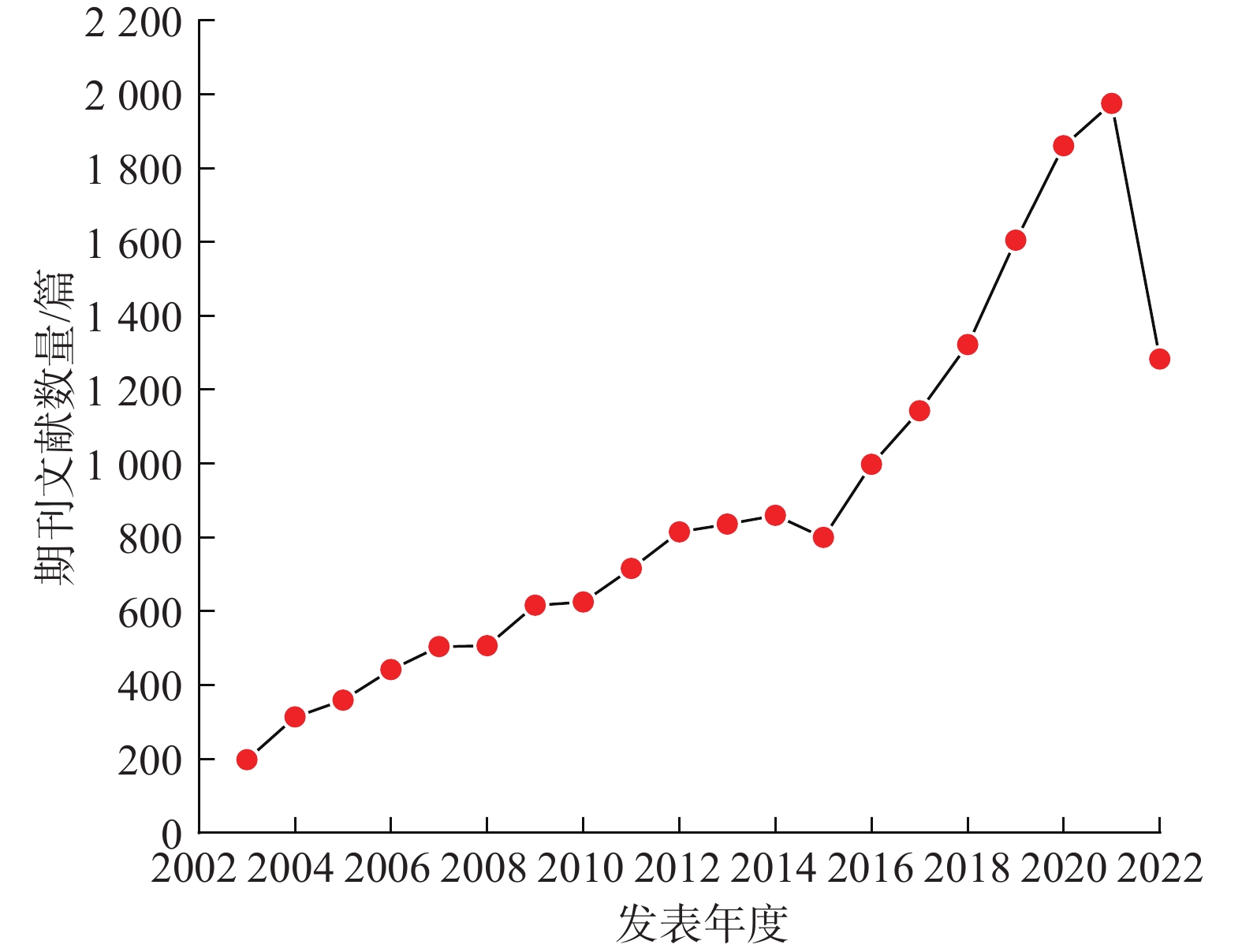
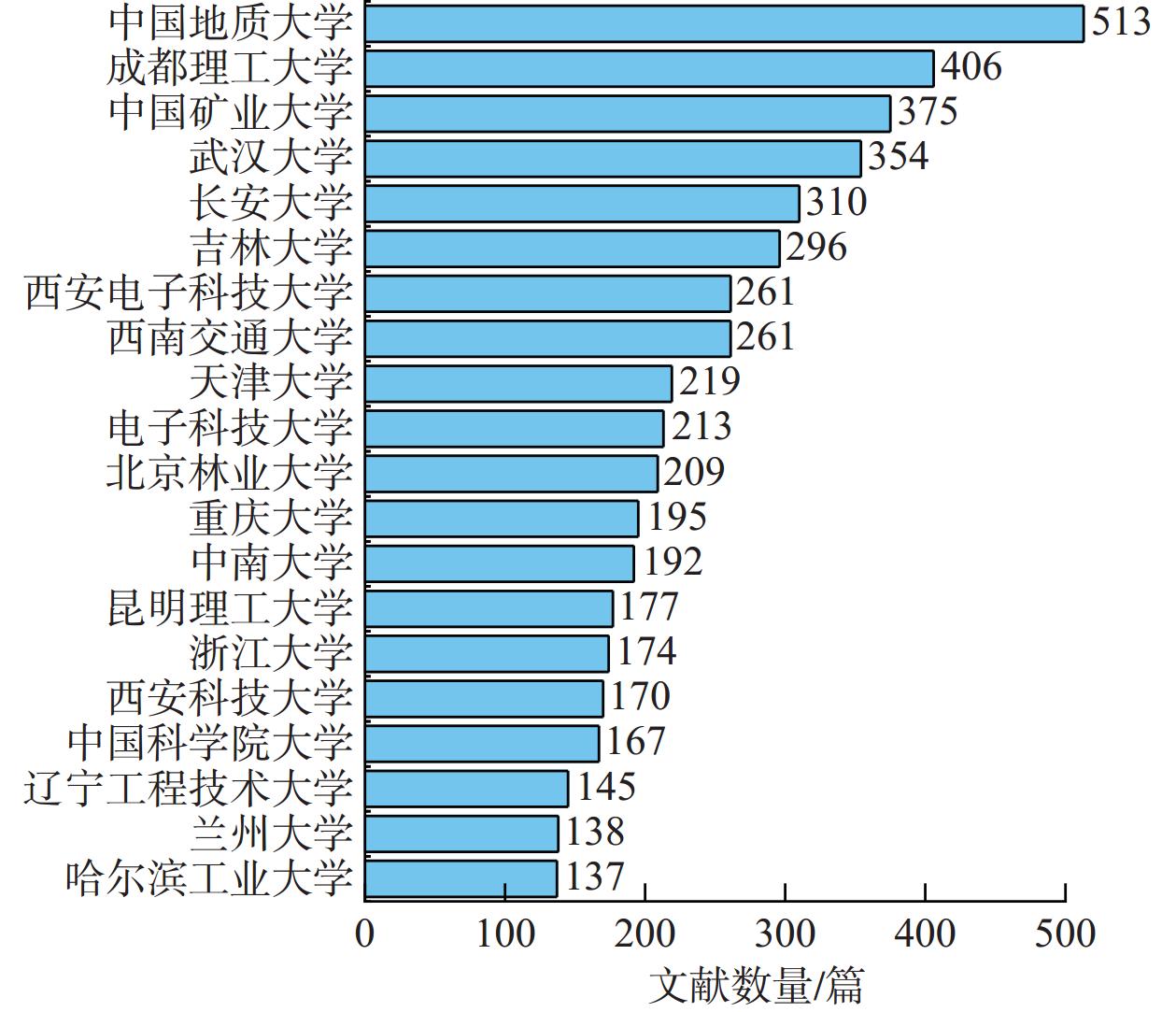
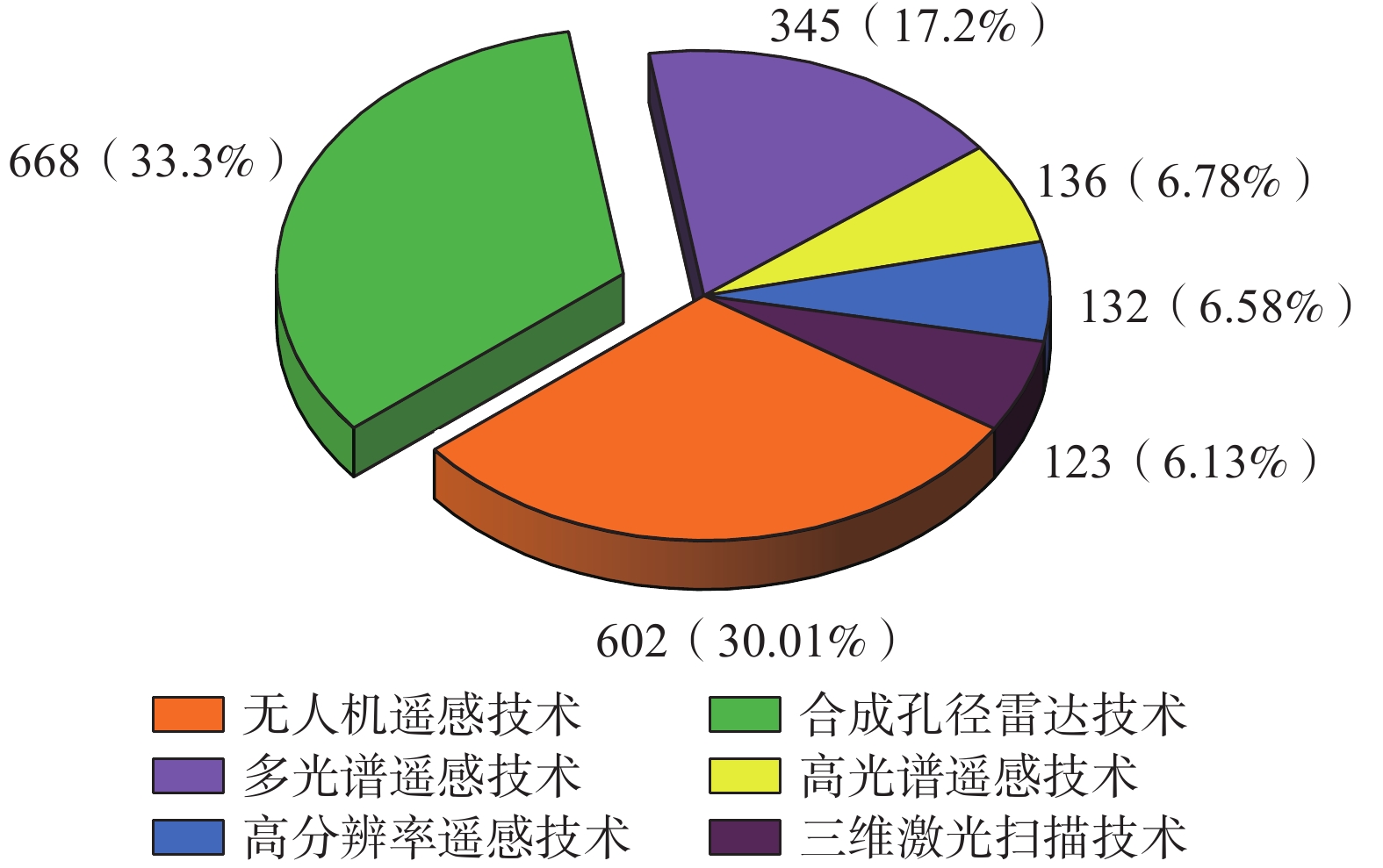
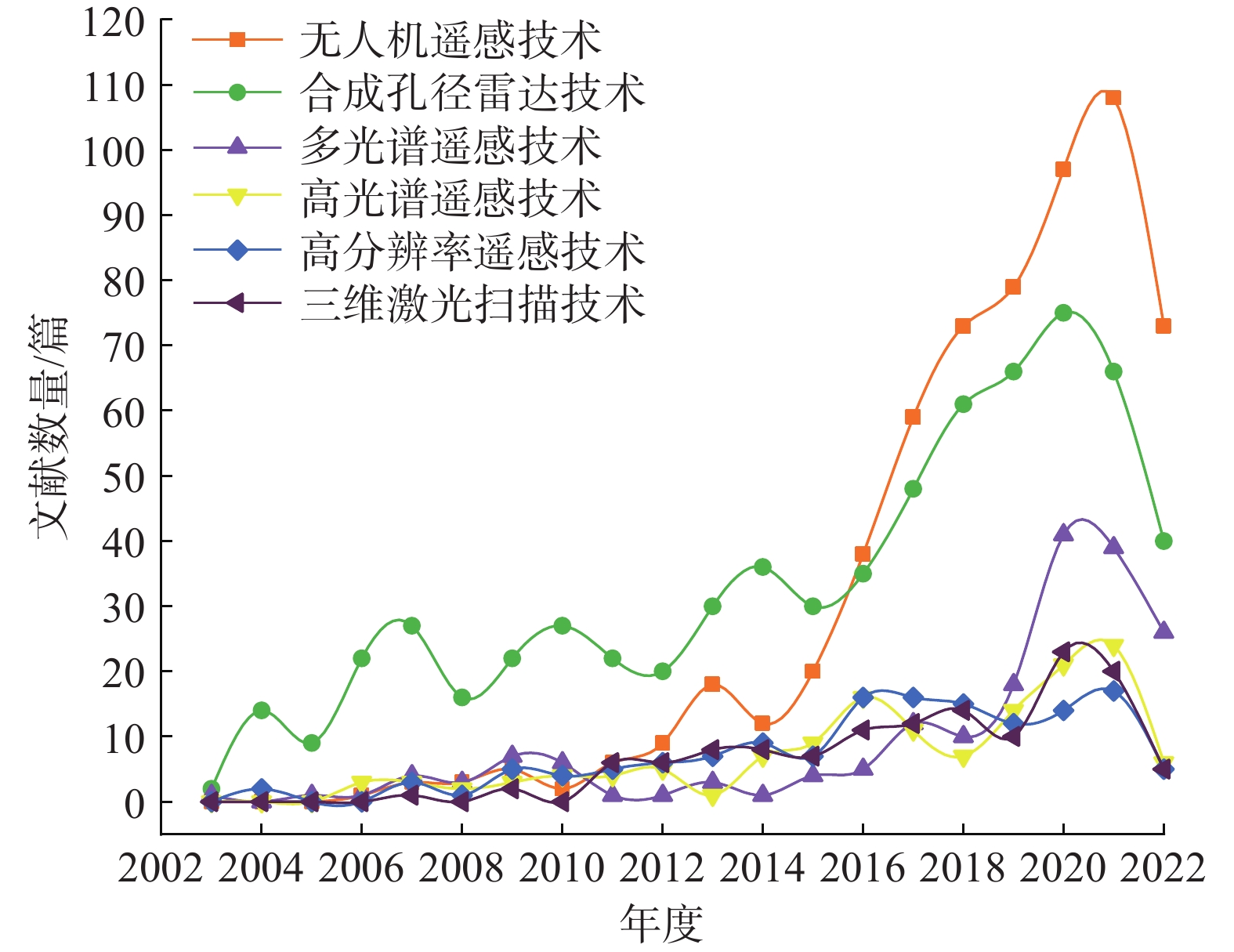
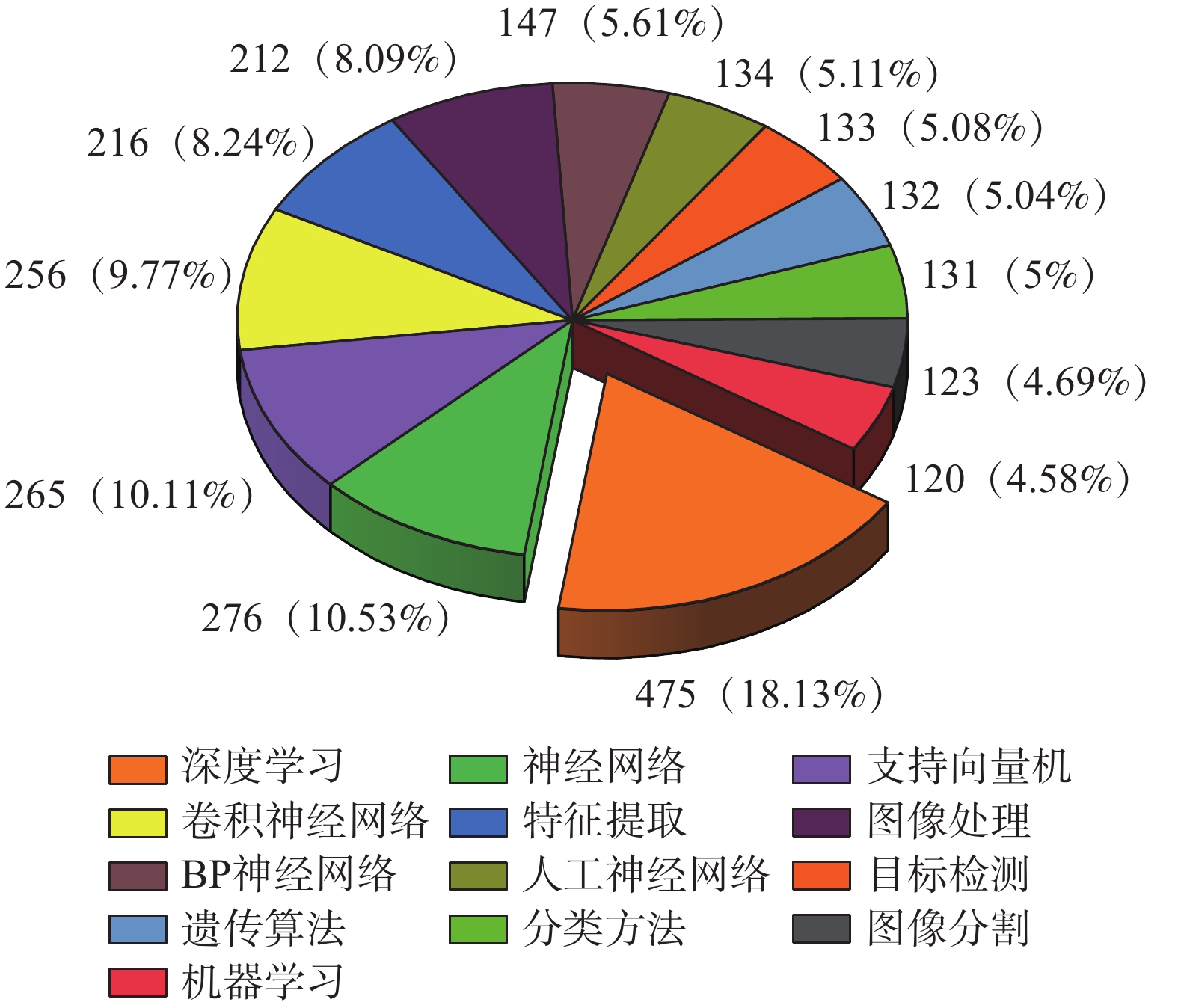
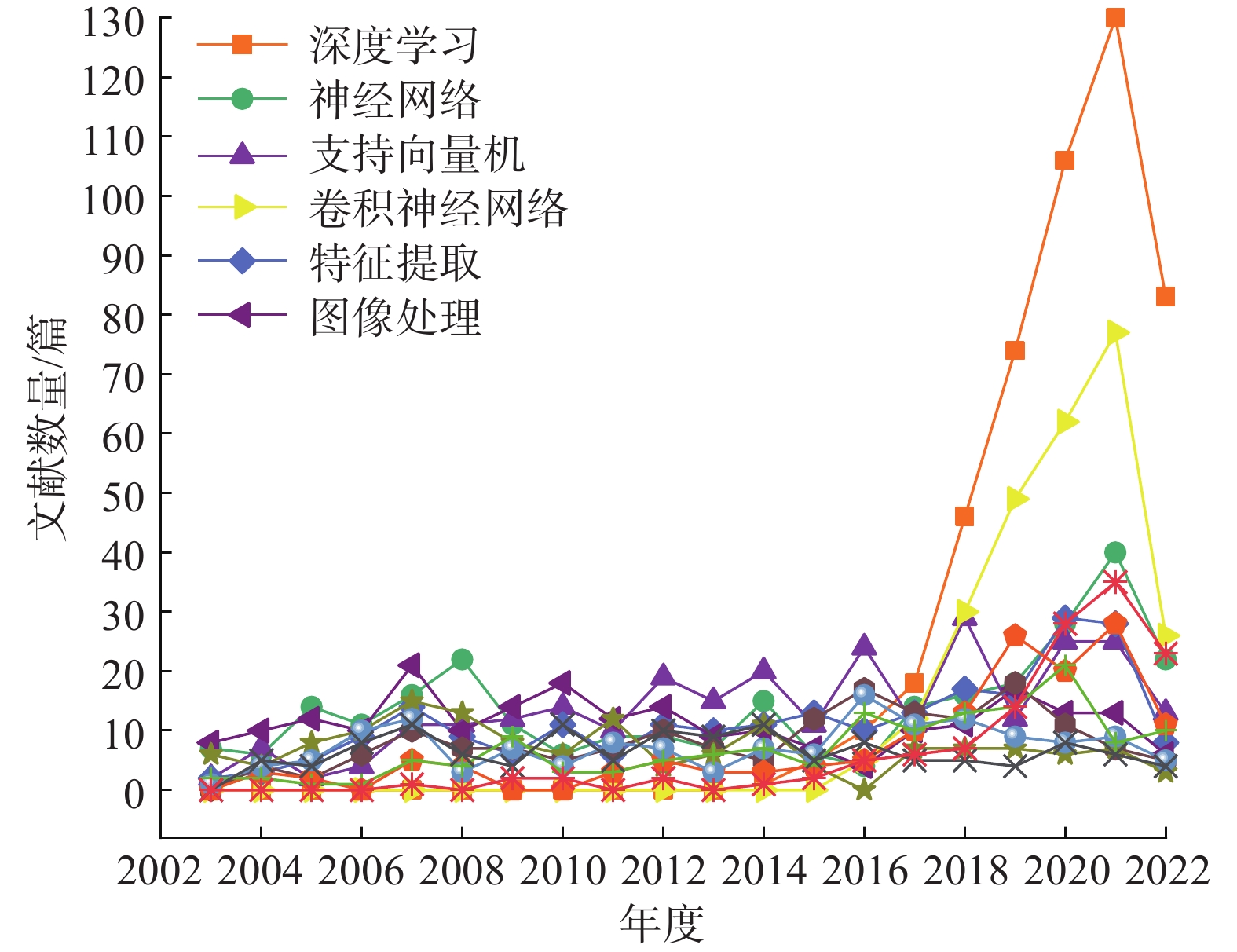
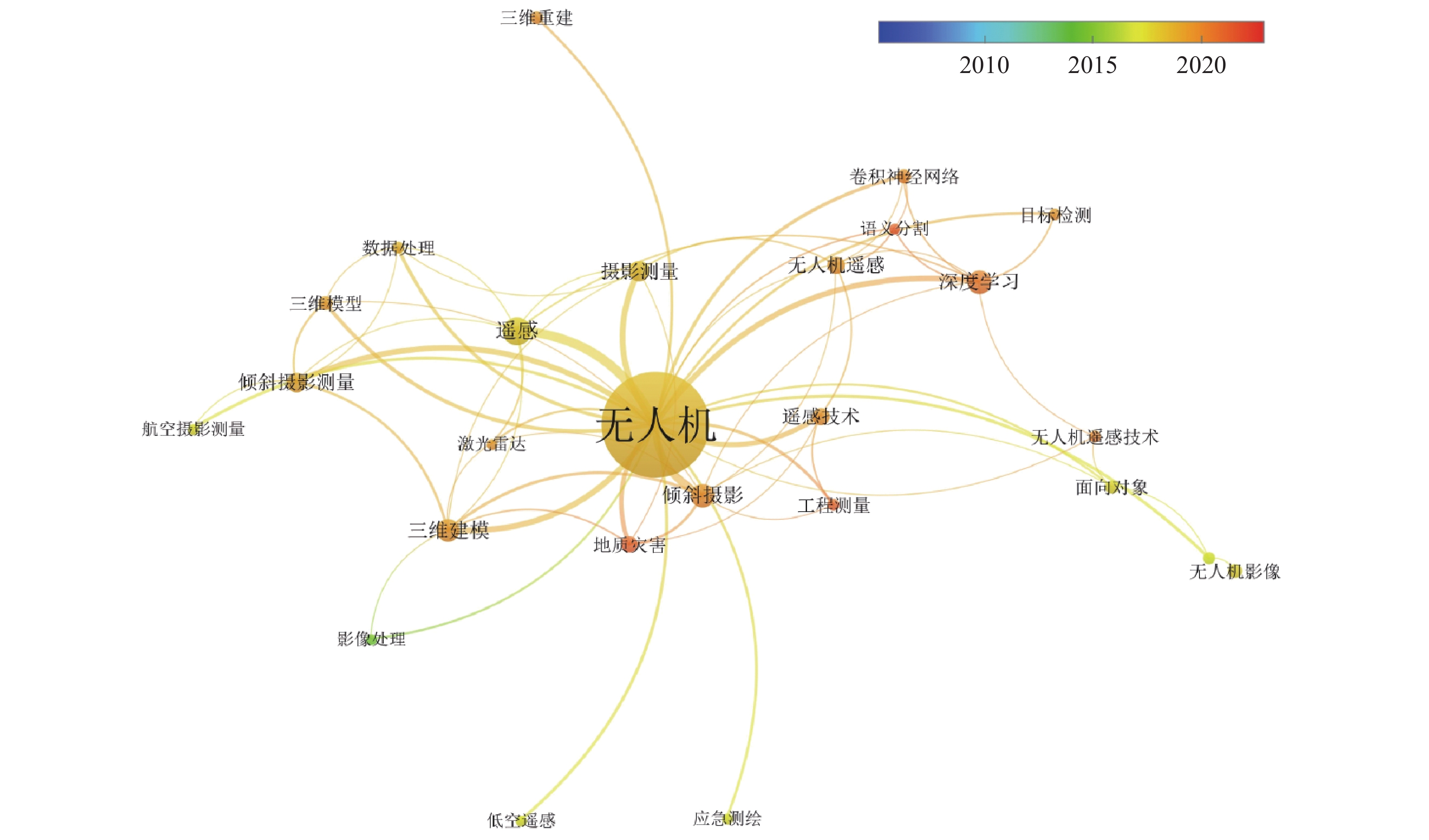

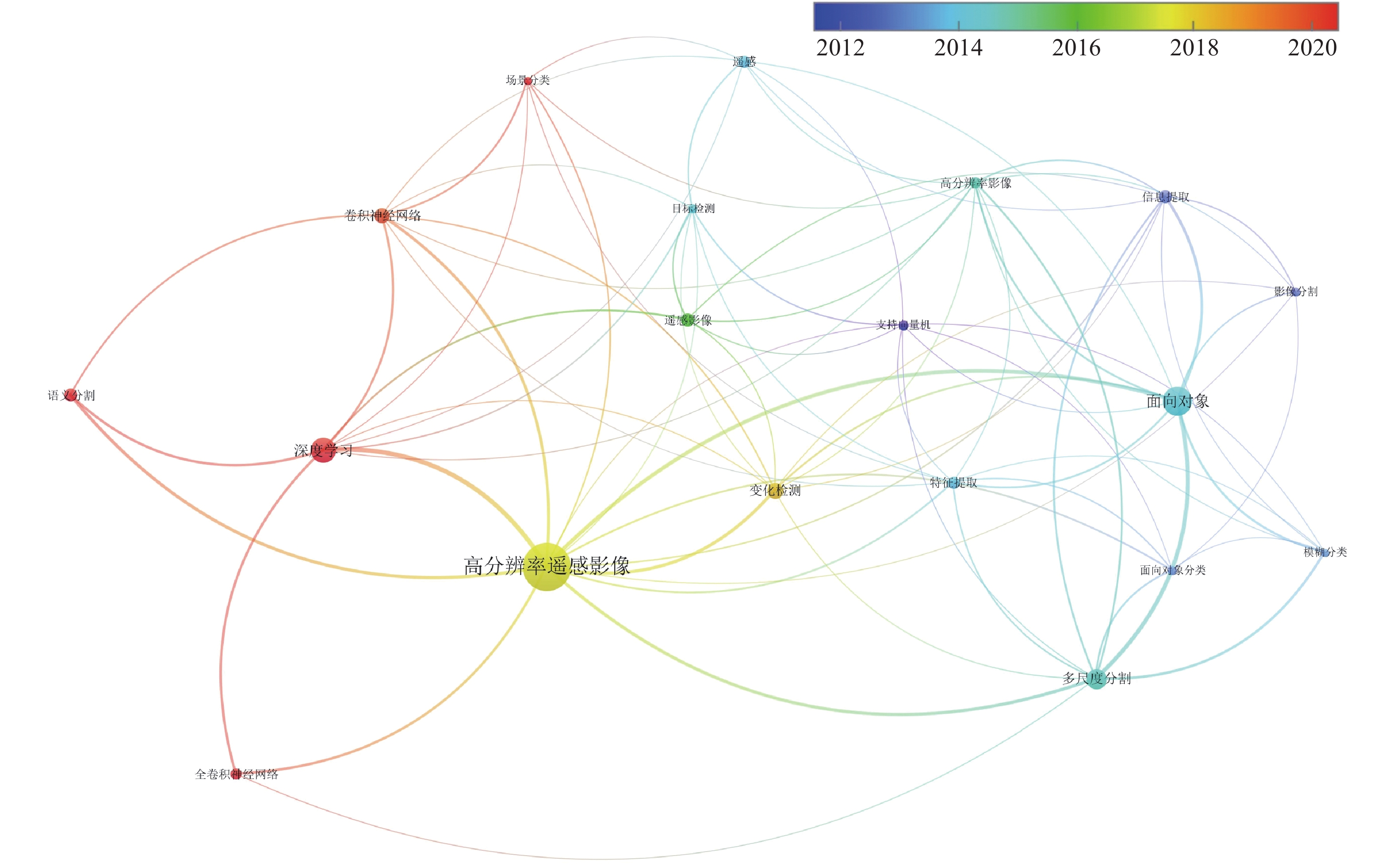

 邮件订阅
邮件订阅 RSS
RSS